Rutherford Discovery Fellows
Seven out of the twelve Rutherford Discovery Fellowships for 2015 have been awarded to University of Auckland science and medical researchers.
The Rutherford Discovery Fellowships are one of New Zealand’s most prestigious science awards, fostering the development of future research leaders by providing funding of up to $800,000 each over five years to cover salary and research costs. The funding is administered by the Royal Society of New Zealand on behalf of the Ministry of Business, Innovation and Employment.
Dr Peng Du
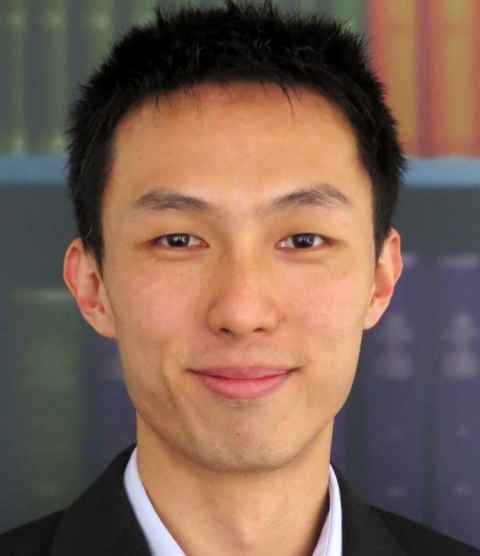
A joint experimental-modelling strategy for translational gastrointestinal electrophysiology and motility
Dr Peng Du obtained his BE (Hons) in Biomedical Engineering in 2008 and PhD in Bioengineering in 2012, both from the University of Auckland. His main research interest is to discover the roles of the gut bioelectrical activity and motility in digestive functions. He designed a number of flexible electrodes for monitoring gut activities, and developed a series of mathematical models to predict effects of novel therapeutic options on digestive disorders. Dr Du was awarded a Rutherford Foundation New Zealand Postdoctoral Fellowship and a Royal Society of New Zealand Marsden Fast-Start Grant, which enabled him to conduct world-leading research in bioinstrumentation, mathematical modelling, and experimental study of gut bioelectrical activity and motility. He is currently a Research Fellow at the Auckland Bioengineering Institute, and he also lectures for the Department of Engineering Science, at the University of Auckland.
Research
Every muscular contraction in the human body generates a bioelectrical event. In digestive health and diseases, some prominent chronic digestive disorders are associated with dysrhythmias of a bioelectrical event, also known as slow waves, in the gastrointestinal tract. Therefore, an improved foundation for understanding of slow wave dysrhythmias will offer more specific avenues targeted at the underlying patho-electrophysiological mechanisms to develop diagnostic and electroceutical options for those digestive disorders. The overall strategy of this programme is to employ a joint experimental-modelling approach to integrate novel and existing experimental data of gastrointestinal electrophysiology, tissue micro-structure, and motility function in a unifying mathematical modelling framework. Through coordinating a world-class inter-disciplinary team of biomedical engineers, physiologists, and clinicians, Dr Du will obtain high-resolution electrical mapping data of slow waves, calcium activity data, and detailed images of the pacemaker cell (the interstitial cells of Cajal) network structures in the gastrointestinal tract. A series of mathematical models will then be used to simulate how slow waves propagate in the pacemaker cell network, and discover the effects of pacemaker cell loss on diminished digestive functions. Finally, a commercial arm of the programme will be focused on securing intellectual properties for novel instrumentation and analysis systems, toward building a medical technology-based company in New Zealand.
Dr Miro Erkintalo
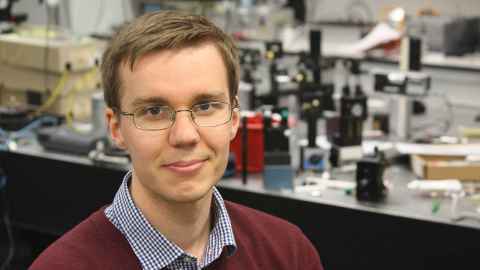
Lighting up New Zealand: Next-generation laser sources for scientific and industrial applications
Dr Miro Erkintalo completed a PhD in Physics at the Tampere University of Technology, Finland, in 2012. His doctoral work focused on exploring how intense bursts of laser light behave in optical fibres, and how laser-based systems can be leveraged to gain insights into a diverse range of natural phenomena. Following his PhD, Miro joined the University of Auckland as a post-doctoral fellow, expanding his expertise to the development and commercialisation of ultrafast laser sources for use in applications such as micromachining and biomedical imaging. Supported by a Royal Society of New Zealand Marsden Fast-start grant, he has more recently studied and developed several photonic technologies based on macroscopic and microscopic resonators, including all-optical memories and microscopic devices capable of creating thousands of laser beams with different colours. In 2014, Miro was appointed as a Lecturer in Physics at the University of Auckland. For more information, see Dr Erkintalo’s website.
Research
Lasers have had a transformative impact in almost every aspect of our lives. The cars, computers and mobile phones we buy today are manufactured using lasers; many everyday items such as bar-code scanners and CD players would simply not exist without the laser; the internet and our modern-day privilege to effortlessly communicate with our overseas loved ones is enabled by lasers. The list is endless. Commercially, lasers constitute a multibillion-dollar global market. The number jumps to trillions when including industries that rely on lasers as “enablers”. Not bad for a technology initially described as a “solution looking for a problem”.
Different applications require laser light of tremendously different characteristics, and in many instances it is precisely the development of a new laser source that opens the doors to new commercial and scientific possibilities. No wonder, then, that there is a continued academic and industrial push towards the development of new and improved sources of laser light; both those that advance upon existing technologies, as well as entirely novel devices that hold the potential of spawning altogether new areas of application.
The overarching theme of Dr Erkintalo’s research programme is the development of a suite of advanced new laser sources. Specific objectives range from sustaining to wholly disruptive innovations: (i) improved ultrafast fibre lasers, with characteristics tailored to suit distinct applications in industrial environments, (ii) revolutionary mode-locked fibre lasers that are directly emitting white “supercontinuum” light, and (iii) microscopic devices that allow the colour of laser light to be transformed and tuned over broad ranges, with physical size and power-consumption orders of magnitude smaller than any existing technology.
Realisations of innovative new sources of laser light, combined with the rich physics that underlies them, is bound to make a big splash in academia. Moreover, the outcomes from the research have full potential to evolve into tangible products that will contribute to the New Zealand economy. In this context, the price per kilogram of ultrafast fibre lasers, including those examined in this programme, is comparable to that of gold. Compounded by the rapid growth of the global photonics markets, lasers and related technologies represent a future industry that a remote nation such as New Zealand should not hesitate to nurture and embrace.
Dr Annette Henderson

Born and raised to cooperate: Identifying how experience shapes our cooperation foundation
Dr Annette Henderson is a developmental scientist whose research examines the development of cooperation in early childhood with an ultimate goal of understanding why humans cooperate. She received her PhD in 2007 from Queen’s University (Canada), during which she examined preschool-aged children’s ability to selectively learn new words that will be useful to their future interactions. Dr. Henderson then received a fellowship from the Canadian funding agency, SSHRC, to conduct postdoctoral research at the University of Maryland where she developed a new paradigm to examine infants’ understanding of cooperation. In 2009 she joined the University of Auckland where she established her thriving research group and the Early Learning Lab (ELLA). ELLA is a unique research facility where over 3,000 families have come to participate in studies on social, language and cognitive development in early childhood. In 2013 she was awarded a Marsden Fast Start grant to conduct a longitudinal study examining the development of cooperation across the first three years of life.
Research
Cooperation is critical to surviving and thriving in human societies; yet humans vary in their cooperative inclinations and, as a result, cooperation is difficult to sustain. Why are some people more likely to cooperate than others? Dr Henderson will address this important question by identifying how two contexts of early experience, culture and caregiver interactions, shape the development of cooperation in early childhood.
Dr Henderson will examine cross-cultural differences in young children’s cooperation understanding, ability and motivation; by comparing the cooperative tendencies of children being raised in New Zealand to those of children being raised in Vanuatu. This research will demonstrate for the first time whether the variability that has been found across cultures in adults’ cooperative behaviour is evident in the earliest forms of cooperation in which humans engage, or whether such differences only emerge through years of socialization within one’s cultural context.
Dr Henderson will also identify the communicative foundations of cooperation by: 1) developing and validating the world’s first virtual infant model, BabyX, which will be able to simulate infants’ interactive behaviour, and 2) using BabyX to test how subtle changes in infants’ behaviour influence the cooperative nature of early interactions. She will manipulate BabyX’s cooperative behaviour during the interaction in systematic ways (e.g. responds to caregiver with smiles and eye contact or responds with a frown and no eye gaze) to test which behaviours give rise to coordinated interactions. This will be the first demonstration of how specific features of infant behaviour disrupt (or enhance) the cooperative nature of their early caregiver interactions.
Together, this research will advance science by enhancing theories of human cooperation, pro-social development, and will contribute to the creation of tools to promote cooperation in early childhood, which are key to enhancing human cooperative tendencies throughout development.
Dr Cate Macinnis-Ng
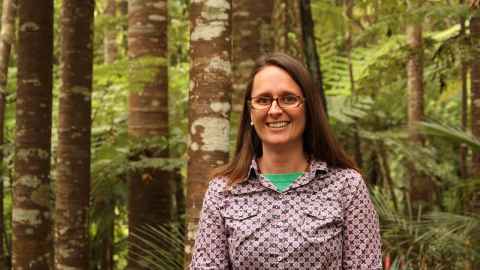
Thirsty forests under future climates: impact of drought on native ecosystems
Dr Cate Macinnis-Ng is a lecturer in ecology in the University of Auckland’s School of Biological Sciences. She was awarded her PhD by the University of Technology Sydney in 2003 and held several fellowships in Australia while having children, before moving to New Zealand in 2010. Dr Macinnis-Ng worked as a research fellow and senior research fellow in the School of Environment (University of Auckland) before moving to her current role in February 2015. She won a Marsden Fast-Start Grant in 2012 and was awarded the University of Auckland Early Career Research Excellence Award in 2014. Dr Macinnis-Ng is fascinated by plant responses to climatic conditions and her current work focuses on how plants will cope under future climates. Her research provides information on changes to the carbon and water cycles associated with warming and drying conditions and she is excited about the opportunity to continue her research on endemic native forests of New Zealand.
Research
Forests play a vital role in carbon and water cycles locally, regionally and globally. New Zealand forests are unique ecosystems with very high proportions of endemic plant and animal species and they also support a thriving tourism industry. Despite the importance of forests, there has been only limited research on climate change impacts on our native terrestrial ecosystems.
In much of New Zealand, climate change will result in longer, drier summers, more frequent extreme events such as droughts, rising temperatures and associated increased concentrations of atmospheric carbon dioxide. Alterations to rainfall patterns affect water-use and productivity of plants across the world and NZ plants may be particularly vulnerable to periods of low moisture availability. Our vegetation evolved under moist conditions so many species are not well-prepared for drought. Kauri (Agathis australis) is a key tree species in Northland forests. Kauri trees are culturally significant, store huge amounts of biomass and play a central role in species assemblage patterns in forests. Yet kauri have physiological traits that make them unfit for drought conditions. Drought-induced forest mortality is a global phenomenon but recent research is suggesting that trees in moister parts of the world are more likely to succumb to drought than those areas with less annual rainfall.
In this study, Dr Macinnis-Ng will create artificial drought in forest plots by diverting rainfall before it reaches the forest floor. There will be three treatment plots to simulate spring drought, summer drought and reduced rainfall throughout the year as well as a control plot. Dr Macinnis-Ng will measure plant physiological responses of several tree species to these drought treatments and work with colleagues to study the consequences of drought for soil microbial communities, soil carbon storage, tree ferns, epiphytes, ecosystem productivity and composition and longer term impacts though analysis of tree rings. By using an integrated approach, this ground-breaking research will capture a range of ecosystem responses that would be missed if each component was studied in isolation. The five-year time frame of the Rutherford Discovery Fellowship scheme allows for assessment of subsequent droughts and longer-term impacts of dry conditions. The information gathered is urgently needed for effective management and conservation of our native forests under a changing climate.
Dr Troy Merry
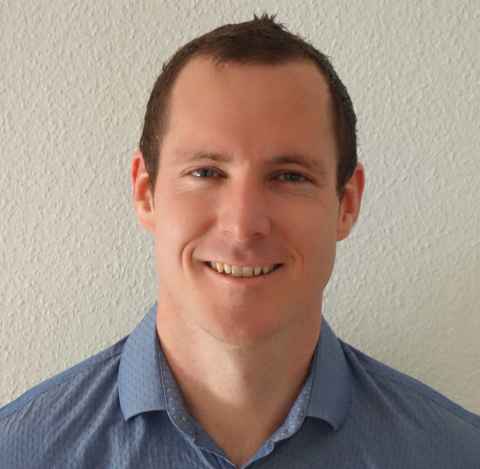
Beta-catenin facilitates skeletal muscle glucose transport and pancreatic beta-cell insulin secretion
Dr Troy Merry completed a Bachelor of Physical Education with honours at the University of Otago before undertaking his PhD in exercise metabolism at the University of Melbourne, for which he received the Dean’s Award for Excellence in a PhD thesis. He then continued his research into the role of reactive oxygen species (ROS) in regulating metabolism and glucose homeostasis during post-doctoral research positions at the Monash University, Australia, and the ETH (Swiss Federal Institute of Technology) Zurich, Switzerland where he was supported by a fellowship from the European Foundation for the Study of Diabetes. Dr. Merry’s research focuses on understanding molecular mechanisms underpinning the development of metabolic disease and type 2 diabetes, and how exercise can prevent the development of these diseases.
Research
Obesity is the major cause of type 2 diabetes (T2D), and more than 25% of New Zealanders are pre-diabetic or diabetic. T2D is characterized by an impairment of the pancreas to release the hormone insulin, and the inability for released insulin to stimulate the transport of glucose (sugar) into the cell. This results in elevated blood glucose levels, which can cause numerous diseases. How T2D develops is not well understood. Dr. Merry will use his Rutherford Discovery Fellowship to investigate the role of the protein β-catenin in supporting insulin release from the pancreas, and in the transportation of sugar into cells. Dr. Merry suggests that obesity results in the impaired function of β-catenin to support insulin release from the pancreas and glucose transport in cells, and this contributes to the development of T2D. If β-catenin is found to play a role in the development of T2D, then it can potentially be targeted to prevent and treat T2D.
Dr Emma Scotter
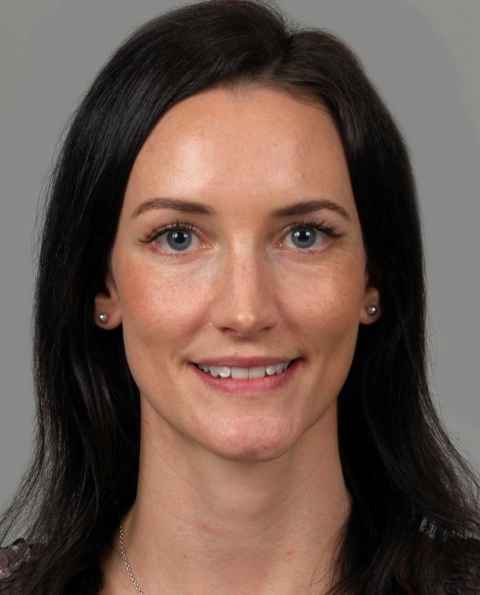
The Theory of (not quite) Everything: The neglected role of the blood-brain-barrier in motor neuron disease
Dr Emma Scotter is a cell biologist who seeks to understand the mechanisms involved in degenerative brain diseases. Emma obtained her PhD from the University of Auckland, specialising in Huntington’s Disease. In 2010 she was awarded a Marie Curie Fellowship to work at King’s College London, where she shifted her focus to Motor Neurone Disease. She discovered that proteins which forms clumps in patient brain cells can be disposed of by cells under certain conditions, meaning that drugs that activate these disposal processes might be of therapeutic benefit. Emma returned to Auckland in 2014 as an Aotearoa Fellow at the Centre for Brain Research, where she continues to examine protein waste disposal in Motor Neurone Disease. She works closely with the Human Brain Bank and Biobank, clinical neurologists, and Motor Neurone Disease care groups to undertake studies using cells and tissue from patient donors and to communicate novel findings to the patient community.
Research
Awareness of motor neuron disease (MND) is growing, following the hugely successful ice-bucket challenge and the release of the Stephen Hawking biopic “The Theory of Everything” in 2014. But we are poised on a precipice; increased awareness and research funding must yet be translated into understanding of disease mechanisms before patients can benefit from better treatments. Indeed, the typical sufferer of MND will die from the disease within 3 years, meaning that Hawking currently represents the exception, rather than the rule.
MND is a fatal and incurable movement disorder affecting ~1 in 15,000 New Zealanders. In this disease, motor neurons within the brain and spinal cord degenerate, causing progressive loss of movement function. Both genetic and environmental factors contribute to motor neuron death in MND. But do these factors also affect other types of brain cells? Dr Scotter has exciting new evidence to suggest that they do. Pericyte cells, which surround the blood vessels in the brain and form part of the blood-brain-barrier, are also damaged in MND. This may explain how blood-borne irritants can leak into the brain in MND, which worsens the plight of the motor neurons.
This work will use pericyte cells grown directly from the brain and spinal cord of MND patients who have bequeathed these tissues to our Human Brain Bank. This incredible resource will allow Dr Scotter’s group to conduct two important studies. The first study asks whether pericytes from brain regions containing dying motor neurons show the same disease signatures as pericytes from brain regions which are spared in MND. The second study then tests a range of chemical compounds for their ability to provoke or alleviate a disease signature in pericytes. Together these studies will determine whether the disease processes occurring within motor neurons also occur independently within pericytes.
This work has important implications for identifying new treatments for disease – by helping Dr Scotter’s group to identify all of the cell types an effective treatment for MND must target, as well as allowing them to test potential new treatments using cells other than just motor neurons. By exploring the role of non-neuronal cell types such as pericytes, they hope to better understand why MND develops and how they can best treat it. And perhaps one day soon they will have their “Theory of Everything” regarding this devastating disease.
Dr Gwenda Willis

What stops convicted sex offenders from re-offending? Developing a strengths-based framework for sexual violence prevention
Dr Gwenda Willis is a registered Clinical Psychologist and Senior Lecturer in the School of Psychology at the University of Auckland. Her research and clinical interests are in criminal justice/forensic psychology and criminology, with a focus on understanding and preventing sexual offending and strengths-based approaches to offender rehabilitation and reintegration. Gwenda completed her PhD at the University of Canterbury, and her clinical training at the Kia Marama Special Treatment Unit for men who have sexually offended against children at Rolleston Prison. Since then she has worked in clinical and research capacities with adults who have sexually offended in New Zealand, Australia and North America. In 2011, Gwenda spent six months in the US as a Fulbright Senior Scholar investigating how the Good Lives Model (developed by Prof. Tony Ward, Victoria University of Wellington) was being operationalised in North American sex offender treatment programmes. In 2012 she received the New Zealand Psychological Society Early Career Goddard Award – Applied Psychology in recognition of her early-career achievements in forensic psychology. Gwenda is a Board Member of Rape Prevention Education and Associate Editor of Journal of Sexual Aggression.
Research
Sexual violence is a global problem of epidemic proportions. The incalculable costs of sexual crimes necessitate dedicated attention to understanding factors that increase or decrease convicted sex offenders’ risk of reoffending. Risk factors that increase the likelihood of reoffending have been researched extensively. Risk factors include the nature and extent of previous offending (e.g., number of prior convictions for sexual offences), as well as psychological problems that are targeted in sex offender treatment programmes (e.g., sexual self-regulation problems, difficulties managing emotions, poor problem solving skills). Convicted sex offenders can be reliably classified into different risk categories (e.g., low, moderate and high) based on their accumulation of risk factors. However, research estimates that anywhere between 30% and 70% of convicted sex offenders classified as “high risk” don’t sexually reoffend. Protective factors that decrease the likelihood of reoffending have been largely neglected in previous research and in risk classification systems, owing to the predominant risk management framework used in forensic psychology. Several domains of protective factors have been proposed – including healthy sexual interests and goal-directed living – yet methods for their assessment have not been developed. Moreover, processes by which previously persistent sex offenders stop sexual offending are poorly understood.
Dr Willis’s research will address these important gaps in the literature in a series of interconnected studies, building on a contemporary strengths-based rehabilitation theory. Overall, the research aims to generate knowledge about how previously persistent sex offenders desist from sexual offending, and identify protective factors that decrease the likelihood of sexual reoffending. First, Dr Willis will conduct in-depth qualitative research to explore desistance pathways in men who have a history of repetitive sexual offending, but who have been living in the community without reconviction for several years. Second, she will develop structured measures for assessing protective factors. Dr Willis will then test these measures in the first prospective, longitudinal study to understand relationships between risk factors, protective factors and sexual reoffending. Taken together, findings will have several real-world implications of global significance. The incorporation of protective factors into risk classification systems will enable better identification of the convicted sex offenders who are most likely to reoffend. Moreover, the identification of protective factors and an understanding of desistance pathways will inform additional intervention targets in sex offender treatment programmes. Treatment programmes that have a dual focus on reducing risk factors and actively promoting protective factors and desistance are likely to be more effective than treatment programmes that target risk factors alone. Indeed, research has found that a sole focus on risk factors can be demotivating for clients, reducing their likelihood of engaging in and thus benefitting from treatment. Ultimately, this research aims to provide an empirical foundation for improving sex offender classification and treatment, thereby preventing sexual reoffending.